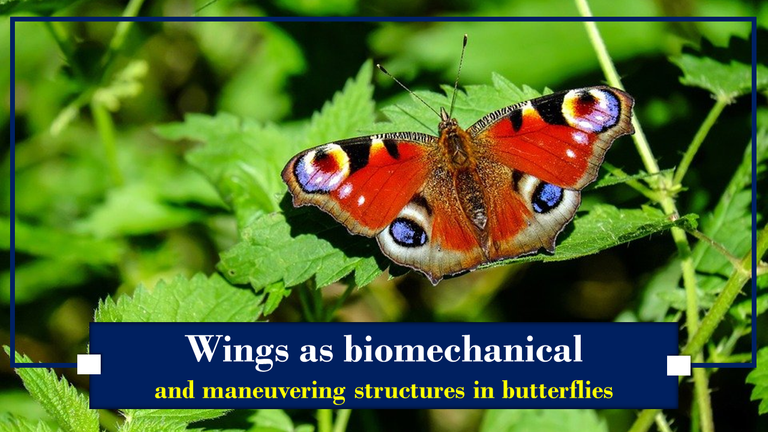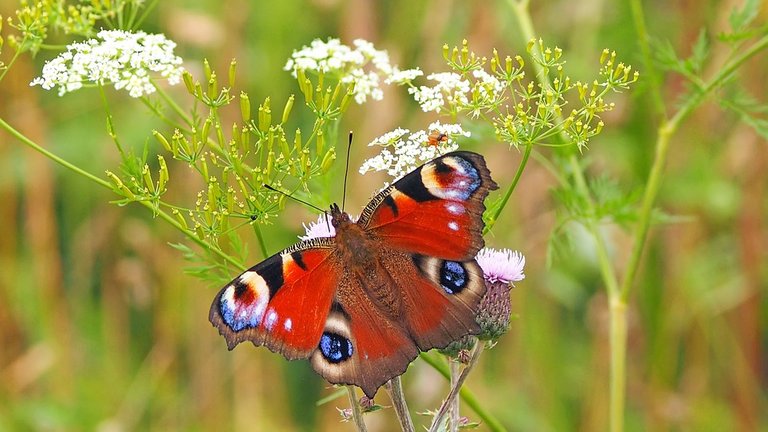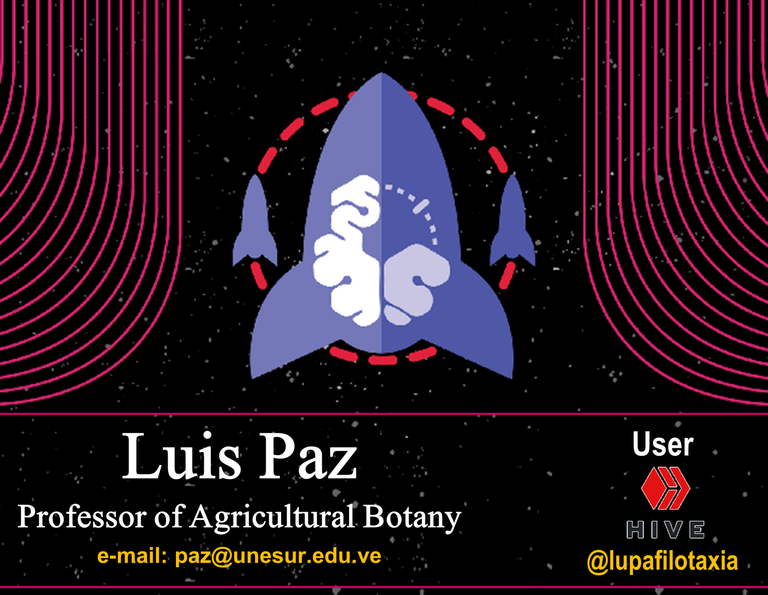Wings as biomechanical and maneuvering structures in butterflies

As usual I will begin this article by extending a cordial greeting to all users of #STEMsocial scientific-academic community of #Hive platform, with this publication I will be socializing content of biomechanical character, related to the interesting method to evade death that butterflies have, before moving forward, it is imperative to note that butterflies have been cataloged by as flying insects, very despite the large and inefficient structures they have to execute their flight expertise.
Introduction
Traveling through the air is a pleasurable activity, but at the same time enigmatic, and although the human being as a superior species has managed to master the basic principles of flight, creating mechanisms and sophisticated devices or aircraft, it is also true that we still need to decipher in its full dimension all the biological elements involved in the nature of flight.
However, since evolutionary processes of natural selection have perfected the flight tactics of the different species that have the ability to fly, fundamentals that science has used to some extent to reason and perfect the designs of aircraft, parts and aeronautical equipment.

Fig. 2 Historically, the large wings of butterflies have been thought to be inefficient structures within flight tactics. Public domain image, Author: Smarko, 2016
However, for science there are still certain divergences with the flight mechanisms exhibited by butterflies, mainly because of the huge wings that these holometabolous insects have to perform flight practices optimally, but nevertheless these structures according to scientific inferences have been classified as ineffective in the flight expertise.
Wings and takeoff speed
Historically, deterministic conceptions have argued that small changes can lead to totally divergent consequences, therefore, if we apply this principle, it is intuitive that the enormous wings of butterflies have a life purpos.
The necessary requirements for the flight of butterflies is a subject under constant research, in this regard it was recently demonstrated that butterflies throughout their evolutionary process, developed an effective way of cupping and clapping their wings to generate thrust and thus avoid dangerous predators.

Fig. 3 The butterflies' ingenious structural design with large wings allows them to take off quickly and escape predators. Public domain image, Author: Kieker, 2016
The aforementioned reveals that the enormous wings of butterflies are nothing more than the result of an ingenious structural design, which gives them the possibility of getting to safety, since the larger the wings, the faster the take-off speed.
CONTRIBUTIONS OF THIS PUBLICATION
It is necessary to point out that even though, to date, it has not been demonstrated how this butterfly strategy works in natural flight conditions, the only thing that is clear is that the scientific community over time tends to discard this type of biological defense behavior, in this sense, it is expected that this ability of butterflies to maneuver at takeoff and subsequent flight practice, will be a source of inspiration for the aerospace industry in the design of new aircraft with greater maneuverability in emergency situations.
BIBLIOGRAPHICAL REFERENCES CONSULTED AND CITED:
[1] Johansson L., and Henningsson P Butterflies fly using efficient propulsive clap mechanism owing to flexible wings. 2021. Article: Online access
[2] Roy C., Debat V, and Llaurens V Adaptive evolution of butterfly wing shape: from morphology to behaviour. Biological Reviews. 2019; 94: 4. Article: Online access
[3] Betts C., and Wootton R Wing shape and flight behaviour in butterflies (Lepidoptera: Papilionoidea and Hesperioidea): A preliminary analysis. Journal of Experimental Biology. 1988; 138. Article: Online access
OBSERVATION
ATTENTION
Readers and followers
If you wish to read more scientific articles in English or Spanish, of excellent academic quality, do not hesitate to visit #STEMSocial and #STEM-espanol, communities that promote scientific content mainly in the areas of Science, Technology, Engineering and Mathematics.

0
0
0.000
https://twitter.com/lupafilotaxia/status/1378439441509933056
Thanks for your contribution to the STEMsocial community. Feel free to join us on discord to get to know the rest of us!
Please consider supporting our funding proposal, approving our witness (@stem.witness) or delegating to the @stemsocial account (for some ROI).
Please consider using the STEMsocial app app and including @stemsocial as a beneficiary to get a stronger support.